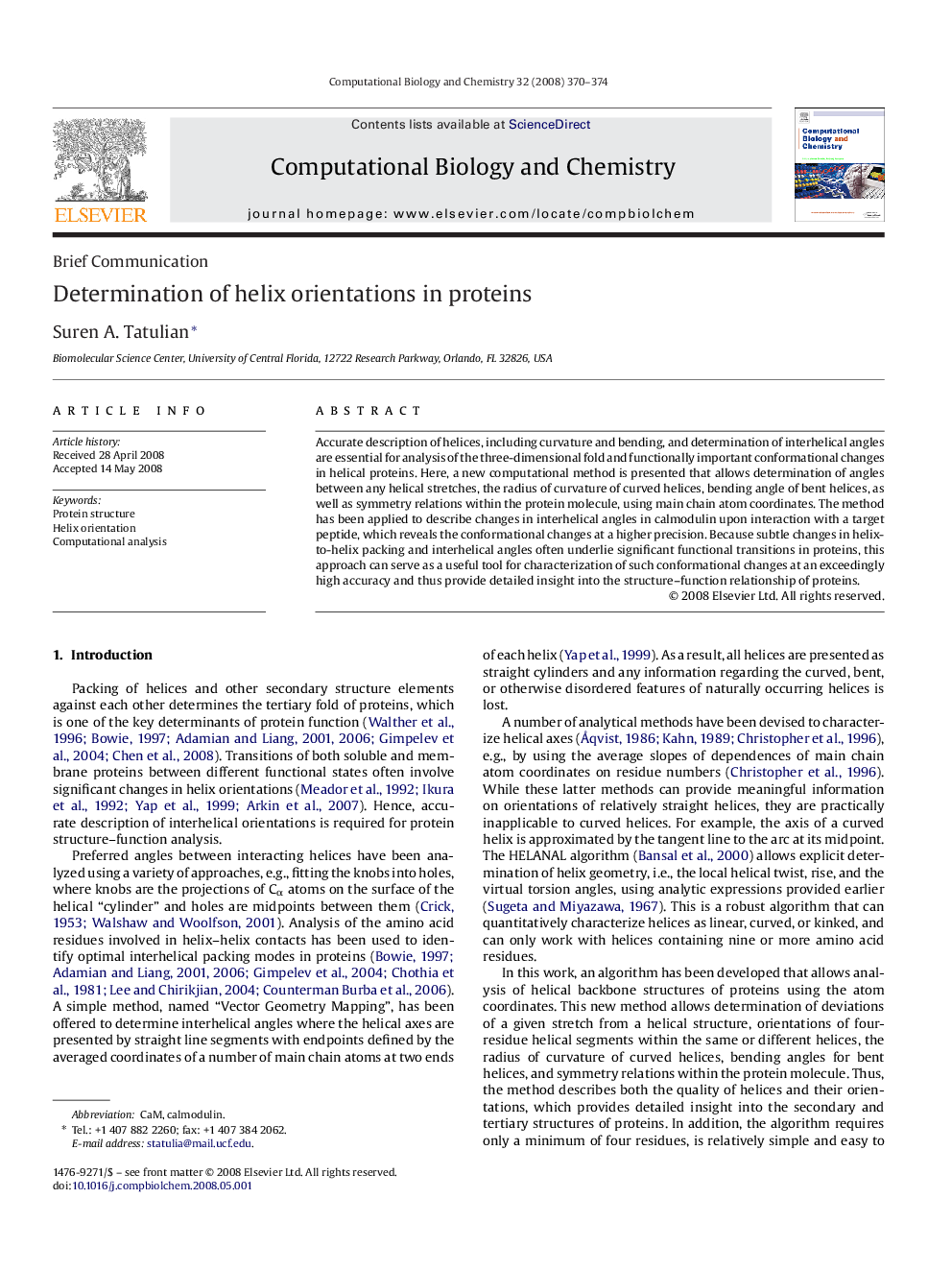| Article ID | Journal | Published Year | Pages | File Type |
|---|---|---|---|---|
| 15480 | Computational Biology and Chemistry | 2008 | 5 Pages |
Accurate description of helices, including curvature and bending, and determination of interhelical angles are essential for analysis of the three-dimensional fold and functionally important conformational changes in helical proteins. Here, a new computational method is presented that allows determination of angles between any helical stretches, the radius of curvature of curved helices, bending angle of bent helices, as well as symmetry relations within the protein molecule, using main chain atom coordinates. The method has been applied to describe changes in interhelical angles in calmodulin upon interaction with a target peptide, which reveals the conformational changes at a higher precision. Because subtle changes in helix-to-helix packing and interhelical angles often underlie significant functional transitions in proteins, this approach can serve as a useful tool for characterization of such conformational changes at an exceedingly high accuracy and thus provide detailed insight into the structure–function relationship of proteins.
